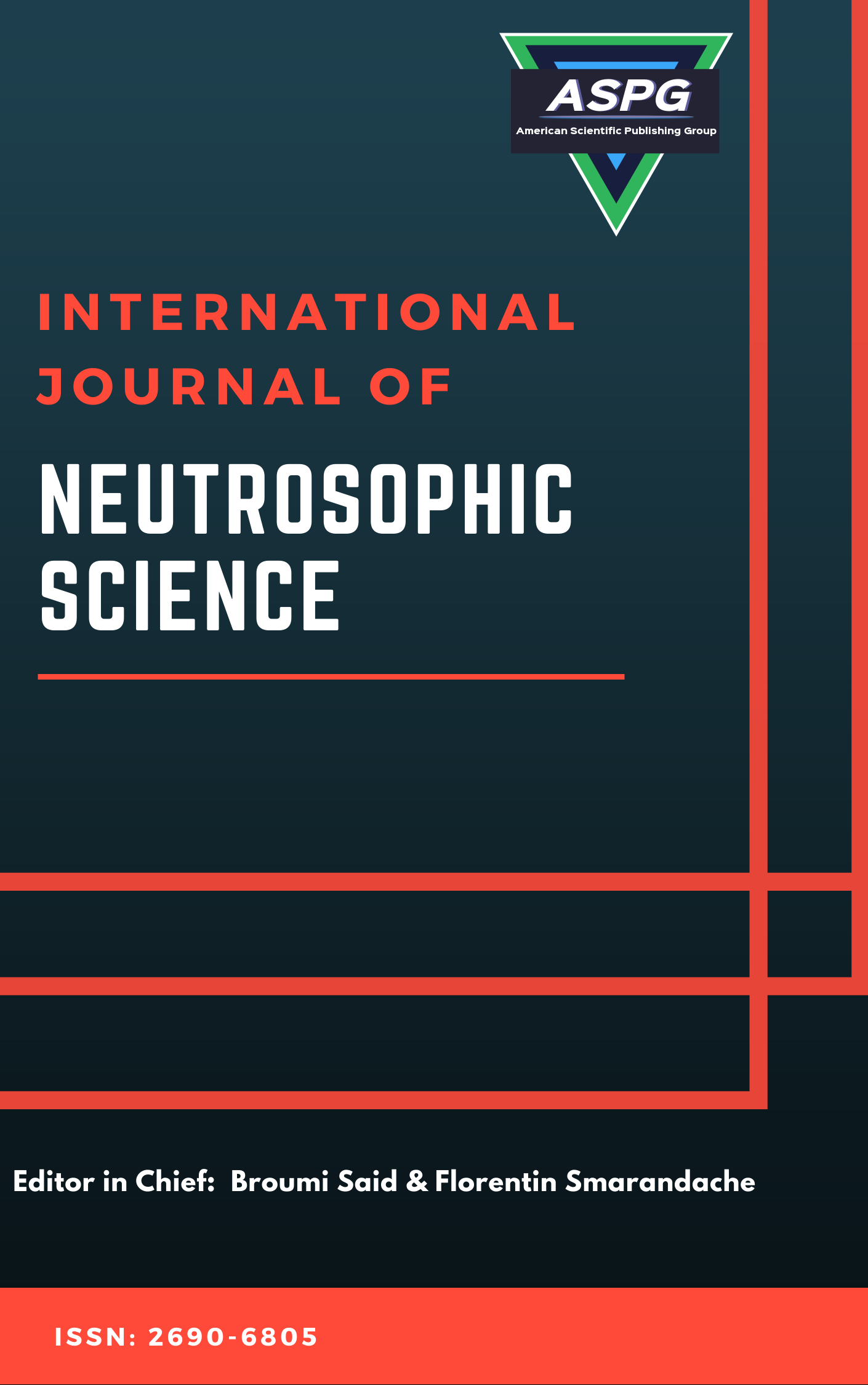

Volume 27 , Issue 1 , PP: 85-92, 2026 | Cite this article as | XML | Html | PDF | Full Length Article
Ammar Al-Khateeb 1 , Methaq A. Abdlwahid 2 , Fawzi Noori Nassar 3 , Faisal Al-Sharqi 4 *
Doi: https://doi.org/10.54216/IJNS.270108
Group theory is one of the significant parts of mathematical algebra. This theory is characterized by its ability to address various applications, including the classification of the symmetry of crystals, atoms, molecules, and polyhedral structures. In this work, we study a newly introduced concept, namely BIVFSs, which is an extension of previous concepts discussed in the previous studies section of this work. In this work, we establish and apply basic algebraic concepts applicable to this concept. We combine this concept with group theory, which has important properties and applications, generating important results, which are explained in the third section of this work. An important result of this work is BIVF-level set, support, BIVF-kernel and bipolar BIVF- characteristic function, and BCF point. Then, we interpret the BIVF-subgroup. Furthermore, we present the associated examples and theorems and prove these associated theorems.
Fuzzy set , Bipolar fuzzy set , Interval valued fuzzy set , Fuzzy group theory , Interval valued group theory
[1] L. A. Zadeh, “Fuzzy Sets,” Inform. Control, vol. 8, pp. 338-353, 1965.
[2] I. B. Turksen, “Interval-valued fuzzy sets and ‘compensatory AND’,” Fuzzy Sets Syst., vol. 51, no. 3, pp. 295-307, 1992.
[3] A. Rosenfeld, “Fuzzy groups,” J. Math. Anal. Appl., vol. 35, no. 3, pp. 512-517, 1971.
[4] P. Bhattacharya and N. P. Mukherjee, “Fuzzy relations and fuzzy groups,” Inf. Sci., vol. 36, pp. 267–282, 1985.
[5] J.-X. Fan, “Fuzzy homomorphism and fuzzy isomorphism,” Fuzzy Sets Syst., vol. 63, pp. 237–242, 1994.
[6] W. R. Zhang, “Bipolar fuzzy sets and relations: A computational framework for cognitive modeling and multiagent decision analysis,” in Proceedings of the First International Joint Conference of the North American Fuzzy Information Processing Society.
[7] K. M. Lee, “Bipolar-valued fuzzy sets and their operations,” in Computing and Information Technologies: Exploring Emerging Technologies, Chulalongkorn University, Bangkok, Thailand, 2000, pp. 307–312.
[8] T. Mahmood and M. Munir, “On bipolar fuzzy subgroups,” World Appl. Sci. J., vol. 27, pp. 1806–1811, 2013.
[9] H. Alolaiyan, M. H. Mateen, D. Pamucar, M. K. Mahmmod, and F. Arslan, “A certain structure of bipolar fuzzy subrings,” Symmetry, vol. 13, p. 1397, 2021.
[10] H. Hammad et al., “Similarity measures of bipolar interval-valued fuzzy soft sets and their application in multi-criteria decision-making method,” J. Appl. Math. Informatics, vol. 43, no. 3, pp. 821-837, 2025.
[11] A. Bataihah and A. Hazaymeh, “Quasi contractions and fixed point theorems in the context of neutrosophic fuzzy metric spaces,” Eur. J. Pure Appl. Math., vol. 18, no. 1, pp. 5785-5785, 2025.
[12] A. A. Auad and A. H. Klaeif, “Best co-proximal and co-Chebyshev of unbounded functions,” J. Phys.: Conf. Ser., vol. 2322, no. 1, 2022, Art. 012033, 3rd International Conference on Mathematics and Applied Science, ICMAS 2022, Baghdad.
[13] Y. Al-Qudah, A. Jaradat, S. K. Sharma, and V. K. Bhat, “Mathematical analysis of the structure of one-heptagonal carbon nanocone in terms of its basis and dimension,” Physica Scripta, vol. 99, no. 5, p. 055252, 2024.
[14] A. Al-Quran, F. Al-Sharqi, and A. M. Djaouti, “q-Rung simplified neutrosophic set: A generalization of intuitionistic, Pythagorean, and Fermatean neutrosophic sets,” AIMS Math., vol. 10, no. 4, pp. 8615-8646, 2025.
[15] F. F. Kareem and M. M. Abed, “Generalizations of fuzzy k-ideals in a KU-algebra with semigroup,” in J. Phys.: Conf. Ser., vol. 1879, no. 2, p. 022108, 2021.
[16] M. M. Abed, “On indeterminacy (neutrosophic) of hollow modules,” Iraqi J. Sci., pp. 2650-2655, 2022.
[17] X. Yang, T. Mahmood, and U. ur Rehman, “Bipolar complex fuzzy subgroups,” Mathematics, vol. 10, no. 16, p. 2882, 2022.
[18] M. U. Romdhini and A. Nawawi, “Degree subtraction energy of commuting and non-commuting graphs for dihedral groups,” Int. J. Math. Comput. Sci., vol. 18, no. 3, pp. 497-508, 2023.
[19] Y. Y. An, F. G. Shi, and L. Wang, “A generalized definition of fuzzy subrings,” J. Math., vol. 2022, no. 1, p. 5341207, 2022.